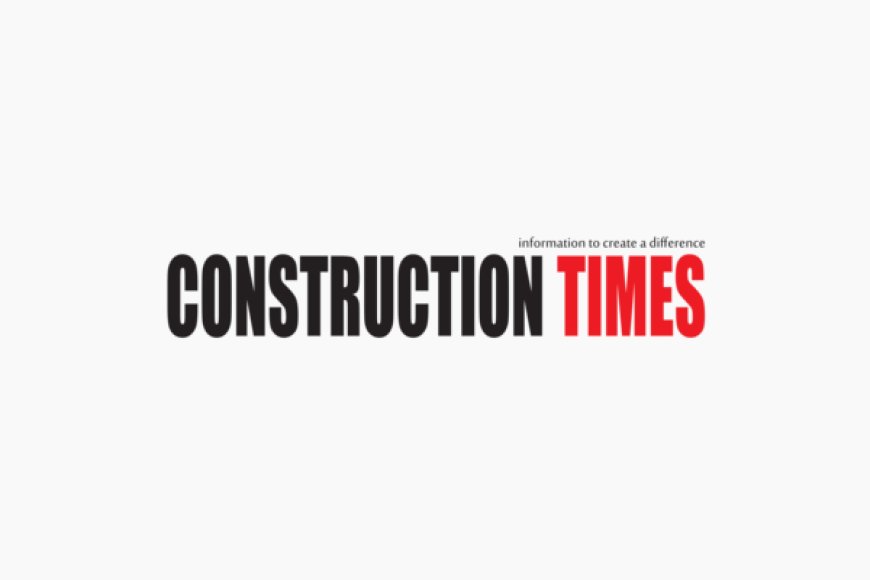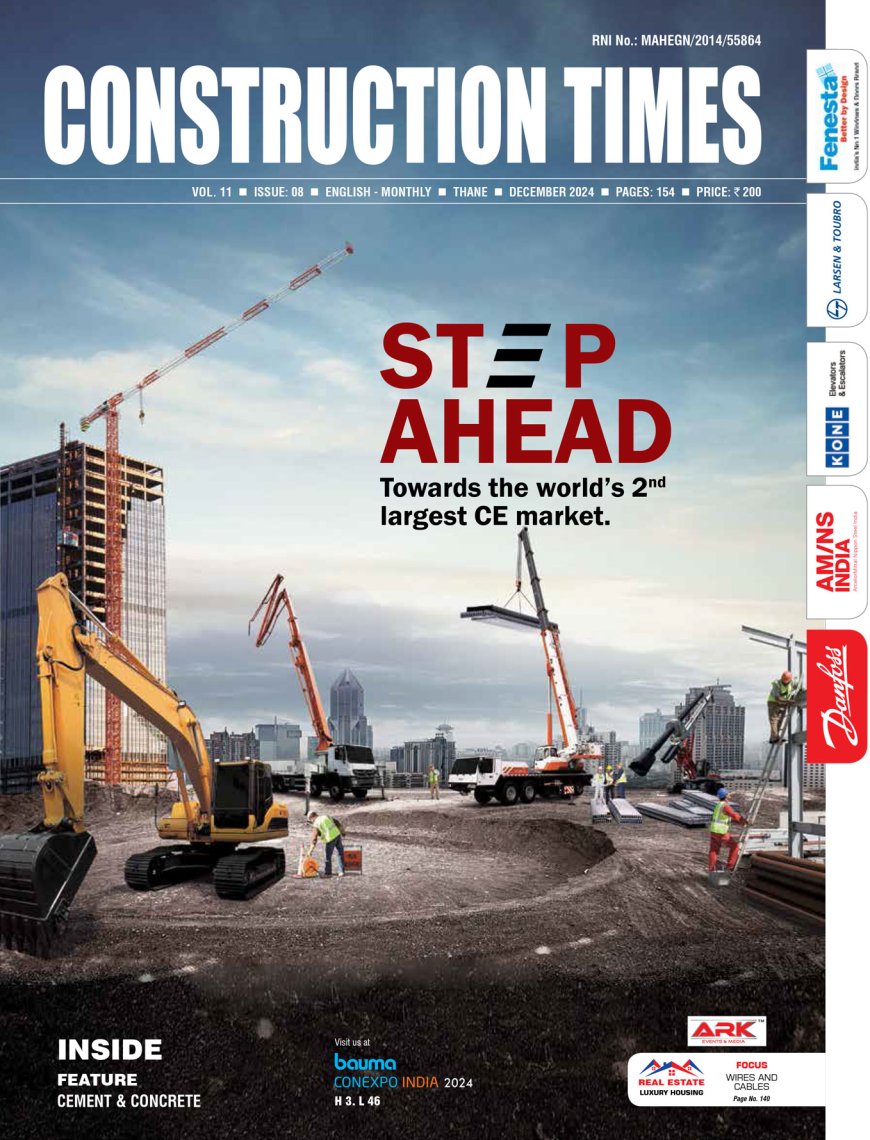A Green Metro
The Mumbai metro line III project has an economic internal rate of return (IRR) of 18.2 per cent, which is very high, points out Ashwini Bhide, MD, Mumbai Metro Rail Corp. The work for Mumbai's fully underground mero line III has begun in full swing. All along the 33.5-km long route, barricades have been put

The Mumbai metro line III project has an economic internal rate of return (IRR) of 18.2 per cent, which is very high, points out Ashwini Bhide, MD, Mumbai Metro Rail Corp.
The work for Mumbai's fully underground mero line III has begun in full swing. All along the 33.5-km long route, barricades have been put up bearing signs that say 'Mumbai is Changing'. Due to certain stretches of roads (particularly in South Mumbai) being narrow or overcrowded, there is some inconvenience due to these barricades that have taken away valuable space, but this inconvenience is minor. Of more pressing concern are the protests from residents and so-called environmentalists who are opposing the location for the car depot and a station at Aarey Colony in the western suburbs. There have been particularly strong protests against the Aarey Colony car depot. Is there no alternative? After all, without a depot, it is impossible to plan the metro. A car depot is necessary to receive, test and commission the trains for service and later, to house the trains and for repair and maintenance. There have been suggestions of an alternate site but Ashwini Bhide, MD of Mumbai Metro Rail Corporation (MMRC) told CT such options are ruled out especially since the alternate site suggested is mired in legal battles. “Hence, we have already written to the government and our board has taken a decision that we cannot make a depot at the alternate site at Kanjurmarg. We have got to have a depot at Aarey, maybe in a concise form. Our board has directed us to do further optimisation, reduce our requirement and reduce the number of trees that would be felled,” she said.
However, she also pointed out that while it would not be possible to reduce the area needed if one were to build a full-service depot, she added that the system could be built in phases. “In a metro system, all trains are not brought in at one go. We have phases, depending on the ridership. We'll probably bring in only 35 trains by 2035 or 2040. Then, 15 more trains will be added at a later date. Now, we will plan the depot for our requirement up to 2035-2040 which will help in reducing the area of land we need. By then, the litigation at the alternate site should also be over and we can consider the next phase,” Bhide said.
Indeed, it is just as well that the state government has acquiesced and the work is now well underway. While New Delhi has almost 250 km of metro network, the journey in Mumbai is only just beginning. While the city has been well served by its suburban trains for over one and a half centuries, there is a limit to the number of people the system can carry. The spillover on to the roads has resulted in infamous hour-long traffic jams and congestion. “Whatever was possible for widening Mumbai's roads network has been done,” says Milind Bharambe, Mumbai's Joint Commissioner of Police, Traffic. He adds: “The roads are now all choked up. We have widened the eastern and western express highways from four lanes to twelve and fourteen lanes and still those roads are choked up. We have got the eastern expressway and the eastern freeway but those are also slowly getting choked up. I don't think there is anything else we can do to improve the road availability. Every day, new vehicles are coming on to the roads. As your travel time increases from your home to your office destination, the efficiency of the city goes down.”
To be sure, the project, funded by the Japanese International Cooperation Agency (JICA), has already carried out an environmental impact assessment (EIA) study. It measured the environmental cost and the environmental benefits; social cost and social benefits. “You compare these and work out the internal rate of return (IRR) on the investment,” says Bhide. She points out: “These are of two types; one is the financial IRR and the other is economic IRR. Economic IRR means you also take into account all the social and environmental benefits. You quantify them, or monetise them basically and that is how an economic IRR is worked out. This project has an economic IRR of 18.2 percent which is very high because of the social and environmental benefits of the project in the long run.”
Just how dos the Mumbai metro line III achieve this? To start with, it will not use any fossil fuel, only clean energy. For lighting as well as other energy requirements, the new line will use solar energy as much as possible. The trains will use a regenerative braking system which means that when the brakes are applied, the energy generated is either given back to the grid or transferred to a neighbouring train, thereby ensuring optimal utilisation of energy. “I think we are more aware environmentally; we have a more responsible approach towards the environment. It is a very simplistic argument to say that if a certain number of trees are cut, the project is detrimental to the environment,” says Bhide. She adds: “One cannot have that view; at least those who are supposedly educated people have to take a holistic approach.”
A comparison with New Delhi will perhaps illustrate the point better. For the Delhi metro, the Delhi Metro Rail Corporation (DMRC) did fell 50,000 trees to build about 225 km of metro network that is under operation and about 100-200 km under construction. However, simultaneously, DMRC planted more than 300,000 trees, which have had a survival rate of over 80 per cent. Some trees were even transplanted while most were newly planted. Today, New Delhi certainly looks equally green as it was when DMRC first started out.
And while it is true that trees are the lungs by way of which an entire city breathes, it is equally true that nowhere in the world have people not cut them down to build infrastructure. In fact, not creating and upgrading infrastructure to keep pace with rapid population growth is more environmentally detrimental in the long run. In summary, it is necessary to strike the right balance with the environment while simultaneously enhancing infrastructure to handle increased capacity requirements.
With the larger issues, well under control for the project, the contractors that have been awarded the works for the civil engineering, are currently busy surveying the underground utilities and ways to divert/relocate/reroute these. Tunneling is expected to start sometime from September this year and may take the best part of up to a year. Next up will be the systems contracts for rolling stock, traction systems, electrical systems, power supply and sub-stations, signaling and telecommunications, automatic fare collection, tunnel ventilation and environmental control system, and platform screen doors. Last but not least, there will also be a tender floated by MMRC for lifts and escalators. The tendering will be in two parts - pre-qualification followed by the actual tender. For these systems contracts, less than a handful of Indian companies have the capabilities to deliver these and as a result, only a few are in the fray. L&T, BEML and Titagarh have evinced interest for rolling stock with BEML having rolled out the firs locally produced train for DMRC's phase III lines, as part of a consortium with Hyundai Rotem and Mitsubishi.
Foreign companies that are in the running are German multinational firm Siemens, Canadian multinational aerospace and transportation company Bombardier, French multinational and passenger transportation company Alstom, and Japanese companies such as Nippon, Mitsubishi and Hitachi. A number of Chinese companies are also in the fray. The total amount of the systems packages taken together will be about Rs 4,000 crore.
If all goes well and the project progresses according to schedule, expect it to be operational in phases beginning 2020 which is the target set by MMRC. “If we do it in phases, we will be
able to make it run by 2020. Our objective is to give a state-of-the-art system to the city. We are making an attempt,” says Bhide.

















